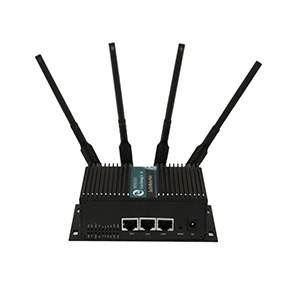E-Lins Industrial 4G Routers: A Solution for Solar Power Monitoring
Solar power is a renewable and eco-friendly source of electricity that can reduce greenhouse gas emissions and fossil fuel consumption. However, using solar power for outdoor monitoring purposes poses many challenges, such as remote locations, unreliable power supply, high cost of fiber optic cables, extreme weather conditions, and the need to monitor various parameters and devices, such as wind speed, rainfall, temperature, humidity, cameras, sensors, etc.
To address these challenges, E-Lins has developed the H720 series industrial dual sim 4G router, which can connect to the Internet with a SIM card without the need for fiber optic cables. The H720 series has a dual sim design, which enhances the network reliability and availability. If one sim card fails, the other sim card will automatically take over, and the dual sim cards can also balance the network load.
E-Lins H685 industrial 4G router has 2 RJ45 Ethernet ports, which can be used to connect to the network or camera, and a serial port RS485/RS232, which can be used to connect to sensors and other devices. An industrial 4G router can satisfy all the equipment connection requirements of a solar powered site, and enable remote management of sensors and video surveillance.
The industrial-grade design of the 4G router H685 has an IP30 protection level, which can withstand harsh outdoor environments and operate normally at temperatures ranging from -30°C to 70°C. It supports 5V~40V DC wide voltage power supply, and automatically adjusts the voltage, so there is no need to worry about power issues. It also supports various VPN client protocols, such as GRE, PPTP, L2TP, IPSec, OpenVPN, etc., and can join a virtual private network to ensure data security and privacy.
Besides solar power supply projects, outdoor wireless routers are also widely used in IoT applications, such as smart agriculture, smart transportation, smart campuses, smart construction sites, smart factories, smart cities, etc., providing network communication for unattended and outdoor networking, remote monitoring and other scenarios. Using wireless data transmission can save engineering costs, such as wiring cables, and is a cost-effective choice for outdoor networking of the Internet of Things.
Now,
"photovoltaic + energy storage" has become the standard configuration
of more and more photovoltaic developments. Photovoltaic power generation and
energy storage systems can be divided into grid-connected photovoltaic power
generation systems and independent photovoltaic power generation systems
according to whether they are connected to the grid. The system needs to fully
consider Effective monitoring of photovoltaic modules, energy storage
batteries, and integrated photovoltaic and storage inverters.
The photovoltaic power generation and energy storage system based on E-Lins router can realize remote centralized monitoring, data analysis, fault alarm and remote maintenance.
The
system can monitor the operating status of photovoltaic equipment in real time,
dynamically monitor equipment faults, and notify users of fault alarms as soon
as possible. It can also perform statistical analysis of power generation data,
real-time statistics of electricity consumption, power generation, energy
storage and income, reduce operation and maintenance costs, remote 24-hour
unattended automatic monitoring, and refined data management.


Comments
Post a Comment